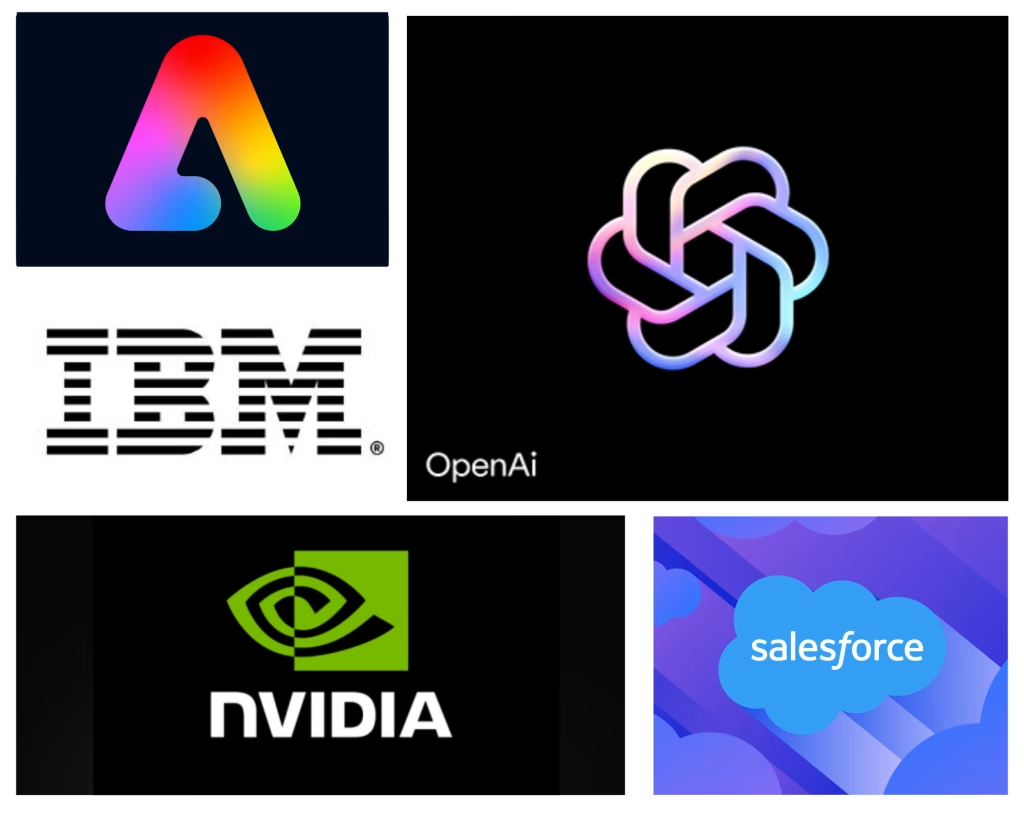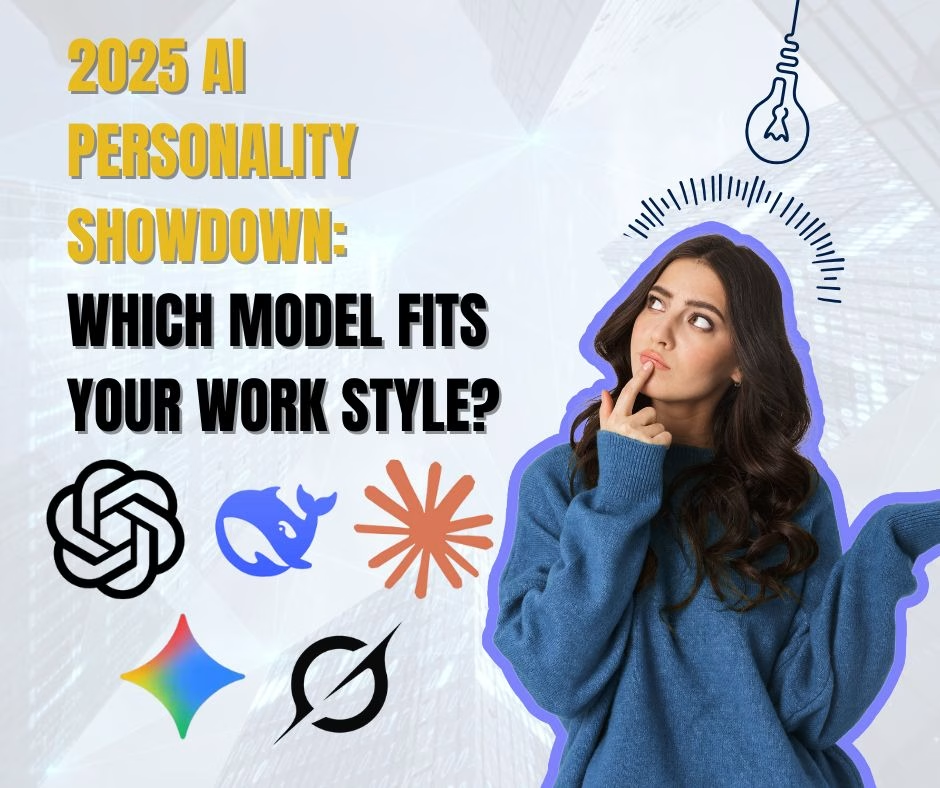
“Another AI chip announcement? Another model launch? From NVIDIA to Adobe, new AI strategies are reshaping the future.”
The AI race isn’t slowing down — it’s expanding. As small businesses, enterprises, and developers ask, “Where next?”, understanding these rising giants’ visions becomes crucial for planning tech adoption, software upgrades, cloud services, and digital transformation.
1. NVIDIA: AI as the Computational Powerhouse
Core Prediction: AI will need ever more powerful, accessible infrastructure — and NVIDIA aims to provide it.
Key Approach
- Dominating AI Hardware: GPUs (H100s), AI supercomputers (DGX), and CUDA ecosystems fuel LLM and generative AI development.
- Software Democratization: Launches like NVIDIA NIMs (NeMo Inference Microservices) help deploy AI models faster and cheaper.
- AI Factories: Building “AI factories” where data enters and valuable AI models are produced.
Why It Matters
NVIDIA isn’t just selling chips; it’s enabling every sector — healthcare, finance, automotive, entertainment — to build AI into their core products and services.
2.OpenAI: AI as a Platform for Everyone
Core Prediction: Foundational models will become platforms, not just tools.
Key Approach
- Expanding Access: ChatGPT Enterprise, API services, and the GPT Store allow businesses and developers to customize and deploy.
- Model Innovation: Moving beyond GPT-4 to multimodal, memory-enhanced, and autonomous agent models.
- Safety First: Strong focus on aligning models with human intent and values.
Why It Matters
OpenAI sees a world where every company, not just Big Tech, can build their own AI layer — creating new business models and smarter products.
3.Salesforce: AI for Smarter Customer Relationships
Core Prediction: AI will revolutionize how businesses sell, service, and market.
Key Approach
- Einstein 1 Platform: AI-driven workflows integrated directly into CRM, sales, marketing, and service processes.
- Trust Layer: Embeds ethical AI practices, keeping customer data secure and compliant.
- Industry Focus: Tailored AI solutions for healthcare, finance, manufacturing, and retail.
Why It Matters
For businesses, Salesforce’s AI isn’t abstract — it’s practical, actionable, and revenue-generating.
4.IBM: AI for Enterprise Trust and Transparency
Core Prediction: As AI grows, trust, explainability, and governance will become non-negotiable.
Key Approach
- Watsonx Platform: Provides data preparation, model training, governance, and compliance tools.
- Ethical AI Leadership: Champions open standards, transparency, and bias mitigation.
- AI + Hybrid Cloud: Integrates AI with secure, flexible cloud infrastructure.
Why It Matters
IBM positions AI not as a tech toy, but as a regulated, trusted business asset for industries like banking, healthcare, and government.
5.Adobe: AI for the Future of Creativity
Core Prediction: AI will become every creator’s assistant, amplifier, and collaborator.
Key Approach
- Firefly AI Models: Train on licensed, copyright-safe content to generate professional-grade images, videos, and designs.
- Creative Cloud Integration: Photoshop, Illustrator, Premiere — all enhanced with AI-powered workflows.
- Ethical Content Credentials: Verifies whether content is AI-generated or human-made.
Why It Matters
Adobe is empowering creative professionals to work faster, imagine bigger, and protect originality in an AI-driven world.
Final Takeaway: Five New Visions, One Expanding AI Reality
These giants — NVIDIA, OpenAI, Salesforce, IBM, and Adobe — show that AI isn’t just about smarter apps or faster searches anymore. It’s about reshaping industries, economies, and human potential.
- NVIDIA wants to power every AI breakthrough.
- OpenAI wants to democratize model capabilities.
- Salesforce wants to make customer relationships smarter.
- IBM wants to build AI you can trust.
- Adobe wants to co-create the future of creativity.
For businesses, the choice isn’t “should we adopt AI?” anymore. It’s “which vision aligns best with our goals?” Smart adoption today means a competitive edge tomorrow.
FAQ
Q: As a business owner or IT leader, how should I approach integrating AI in light of these emerging trends?
A: Start small, but think strategically. Focus on AI tools that directly support your core operations — whether it’s automating customer service (Salesforce), accelerating data analysis (NVIDIA and OpenAI APIs), strengthening compliance and governance (IBM), or enhancing creative content production (Adobe). Early, focused adoption lays the foundation for broader, scalable AI transformation in the future.
Q: Should businesses train their own AI models or use ready-made solutions?
A: It depends on your goals and resources. For most businesses, leveraging ready-made AI models and platforms (like OpenAI APIs, Salesforce Einstein, or Adobe Firefly) offers faster, more cost-effective results without the need for massive data infrastructure. Training a custom AI model makes sense if you have unique needs, proprietary data, or require deep customization — but it demands significant investment in talent, data, and computing power. Starting with ready-made solutions is usually the smarter path for early AI adoption.
Want to revisit or explore more Big Tech AI strategies in depth?
Read the full article: Big Tech’s AI Forecast: 5 Giants, 5 Distinct Visions




